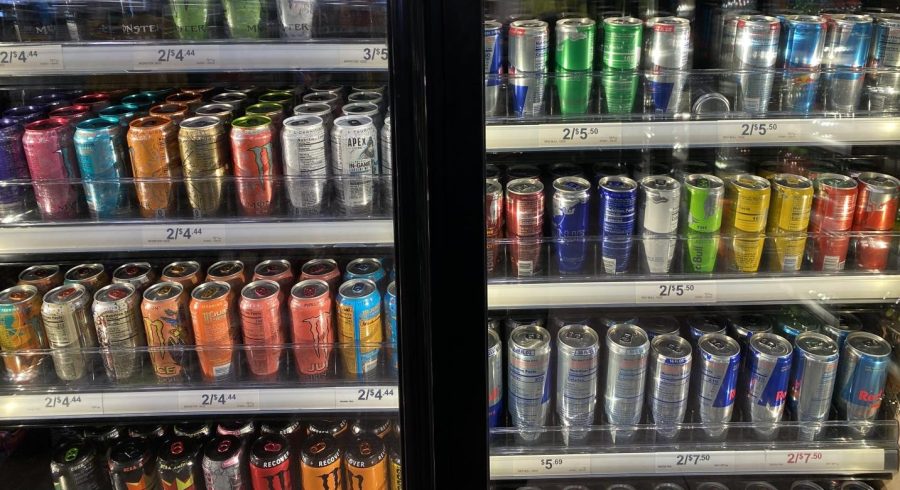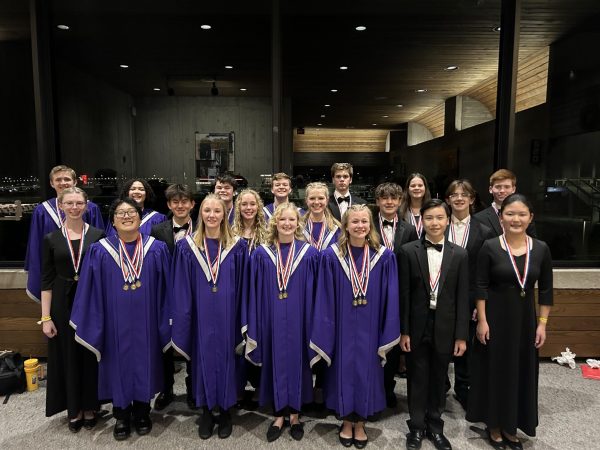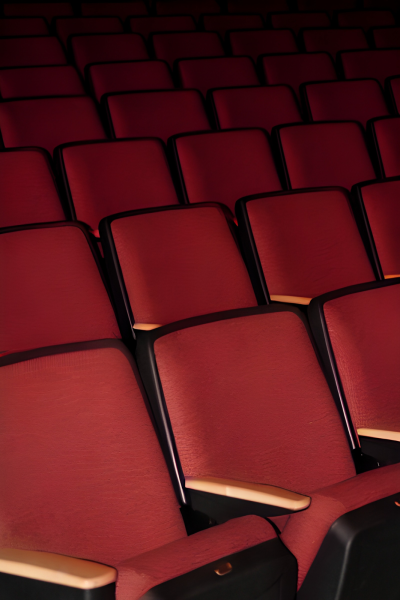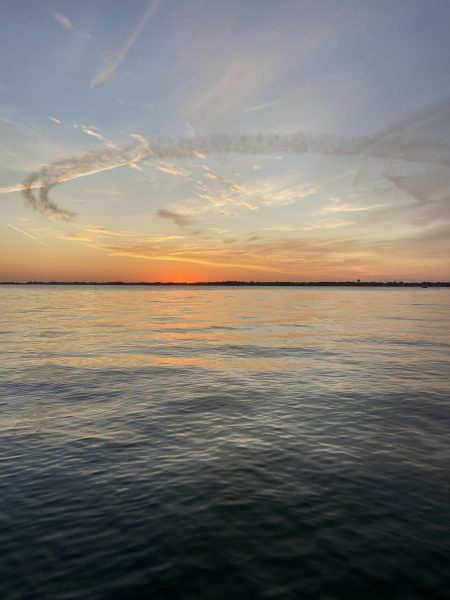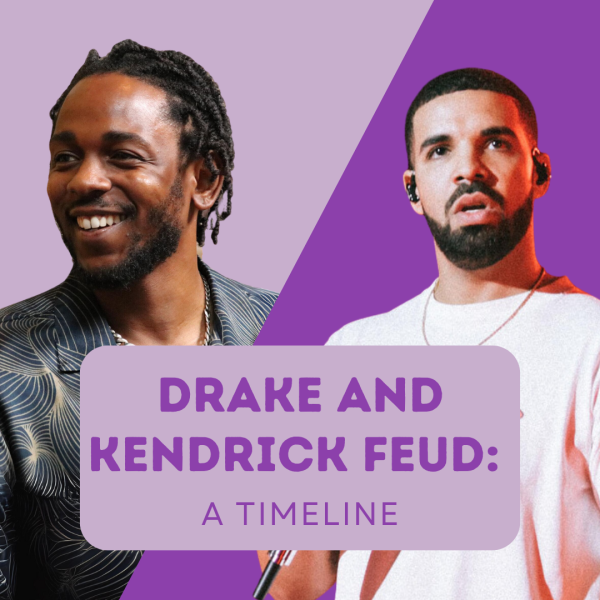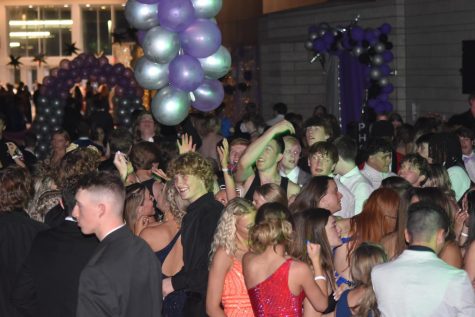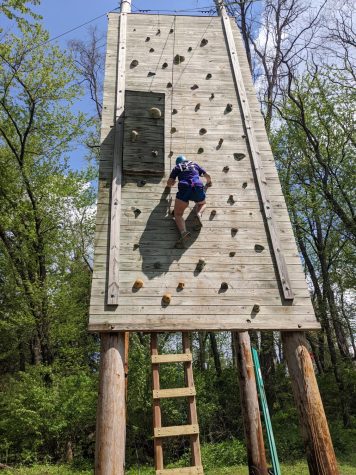The Caffeine Buzz
Is your go-to pick-me-up an energy drink? Increased use of energy drinks in Liberty can be blamed on the caffeine buzz.
Energy drinks line the shelves at many gas stations, giving teens easy access to them.
In almost every class at Liberty, look around for a minute and notice a common object on most people’s desks. Reigns, Bangs, Celsiuses, Redbulls… Almost all types of energy drinks are scattered around the room. The rise of these caffeinated drinks is prevalent here at Liberty and will continue to increase as the caffeine buzz continues.
But what is the caffeine buzz exactly?
These drinks are stimulants, making people feel more awake or alert. Oftentimes, they cause jitteriness and restlessness. Students are fiening for this feeling, and energy drinks can give them more than enough.
Compared to the bitterness of coffee, energy drinks have an appeal like no other. They come in almost every sweet flavor you can think of: cherry, berry, green tea, citrus, coconut, and many more.
Quinlan Lawrence, sophomore, is a big fan of energy drinks.

“For Reign [my favorite flavor would be] white gummy bear, but I also love unicorn Bangs. I don’t like the taste of coffee, so I prefer these,” said Lawrence.
There is such a large variety of brands and their takes on different flavors, that it is very eye-catching and exciting for students to try.
Arin Bedingfield, junior, has an energy drink most mornings during her first few periods, and she said:
“I don’t think about it: I’m just really tired, so I just want to get some energy.”
It can be easy to disregard what they contain, but energy drinks can have from 24-39 grams of sugar- almost equivalent to drinking a soda. However, some of these drinks are advertised as “sugar-free”, such as Reigns or Bangs. Especially to teenagers, this is very appealing, even if they do not have any idea what is in them. They are usually made with Sucralose, Acesulfame potassium (Acek), and Aspartame. Sugar is well known by everyone, but what even are these other substances?
Sucralose, Acek, and Aspartame are all chemically produced and are approved by the FDA, but it is still not the healthiest option using artificial sweeteners because they can be harmful (just like sugar). They have been linked to affecting glucose levels, liver and kidney effects, nausea, headaches, et cedra. It is important to consider the things one eats and drinks, even though many do not consider it all. Especially at this age, it is good to be careful. It is not bad to drink them occasionally but frequent use is not encouraged.
“Honestly, every time I drink an energy drink, I feel like I’m going to die of heart failure or something. [I might] die at 36 because I’m drinking so much of these,” joked Bedingfield.
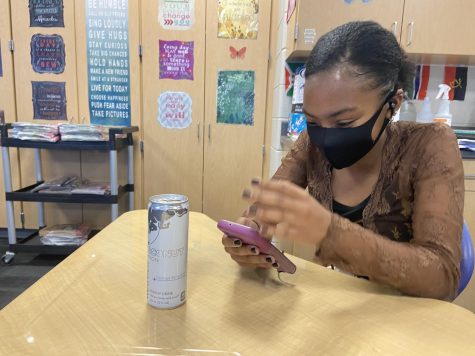
The rise of these drinks can be linked to several different reasons, it just depends on the person.
Bedingfield talked about how she started to develop a habit.
“I saw a red bull and thought, ‘yeah I’m tired today,’ and I drank one. Then it became like an addiction. Now I’ve become dependent on it, so I don’t fall asleep during class,” she said.
Lawrence said energy drinks are just part of his routine.
“[When I don’t have caffeine] I don’t feel as energized…Sometimes I drink them for sports, but, other times, I drink them just to drink them for social energy,” he said.
Caffeine use is almost an epidemic among students, and excessive patterns of consumption are occurring. It just starts with one drink and addicted habits can form. Suddenly sleep loss occurs from the drink, and then you grab another and another and another to compensate. Relying on this caffeine to stay awake may make you stuck because you then always need it when really it is doing more harm than good. That is how kids are getting “stuck” in a loop of reliance.
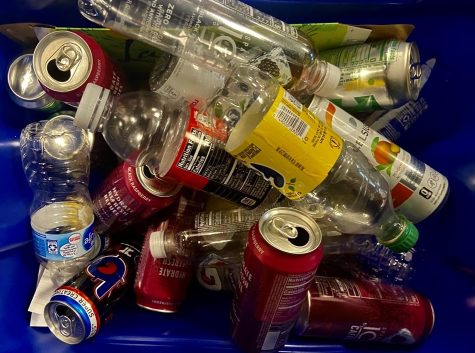
The warning labels on these cans are small and hardly given any thought. Experts recommend that teenagers have no more than 100 mg of caffeine per day. In perspective, a 16oz Reign has 300mg, a 16oz Bang has 300 mg, a 12oz Redbull has 102 mg, a 16oz Monster has 160 mg, and a 12oz Celsius has 200mg. That is why these drinks usually state “18 years or older” because this amount is much more than what is medically recommended for teenagers.
“I honestly do not count caffeine…I have at least two cans of reign a day,” said Lawrence.
Once one develops this “caffeine addiction”, how can one recover? Especially in high school, this idea can be very hard, even impossible, to imagine. Energy drinks are an easy pick-me-up for kids who are not getting enough sleep because of too much homework or are simply tired from sports. Even Liberty cafeteria provides ICE Caffeines that have 70mg. These drinks are almost everywhere nowadays, so the habits and routines of buying and drinking them are hard to change.
Not all kids at Liberty drink a substantial amount of caffeine, students like Isabella Tafolla, Sophomore, are one of these exceptions. She has only ever had a few sips of her friends’ energy drinks, until recently when she drank her first full one.
“The energy drinks [provided at school] don’t have as much as what other students get, they only have 70mg [of caffeine]… so I didn’t feel much different. I could tell that it made an impact on me just a tiny bit but nothing crazy,” said Tafolla.

Although, her opinion on the necessity of these drinks has not changed.
“I don’t think it’s essential that I have to have one to make it through the day. I think [if] I’ve gone this far in school, then I do not think I need them,” Tafolla said.
Tafolla usually does not feel as tired as others, but on a day where she is usually more tired, she said she uses food as her fuel. Tafolla said:
“I usually have peanut butter sandwiches. I [also] try to eat protein, I’ll have a turkey sandwich. “
Especially for students, starting the morning with food can make such a difference. It is more beneficial to be putting nutrition in your body than just trusting these drinks. Even if solid food is not easy in the morning, smoothies, juices, and water are more options. With a moderate amount, tea and coffee are still better options. The “energy drink epidemic” will most likely only grow, but it is important to look out for yourself and be careful.

Jocelyn is a senior at Liberty and this is her third year on the newspaper staff. She participates in numerous sports that she would not like to name....



